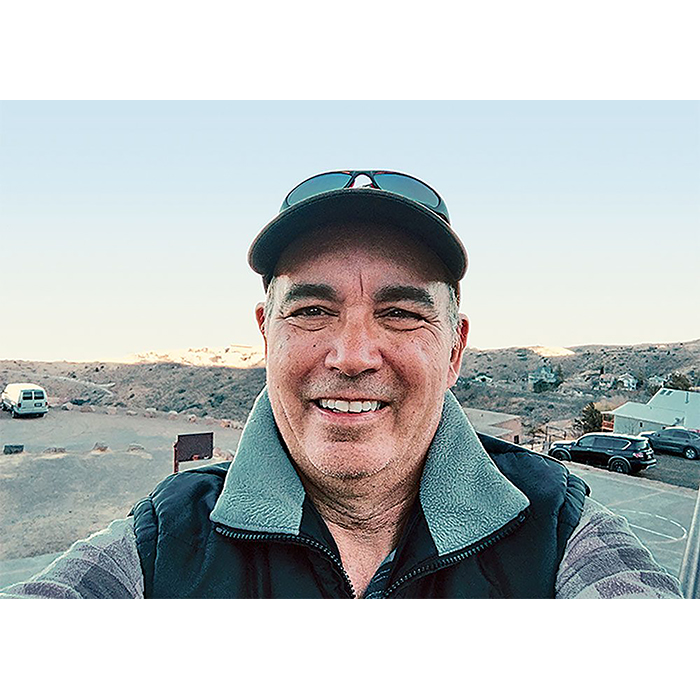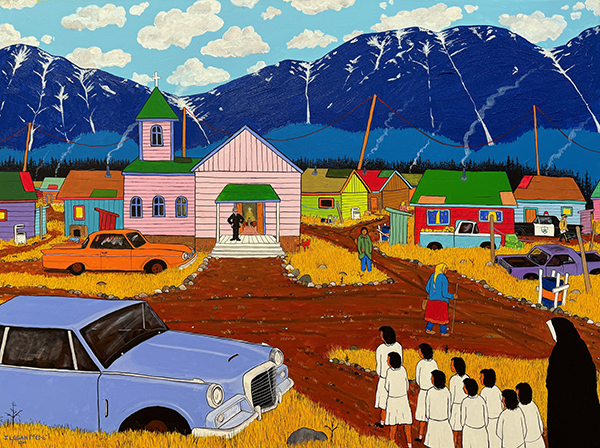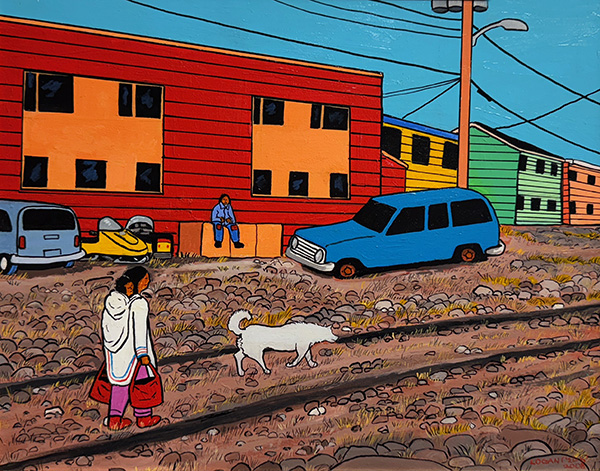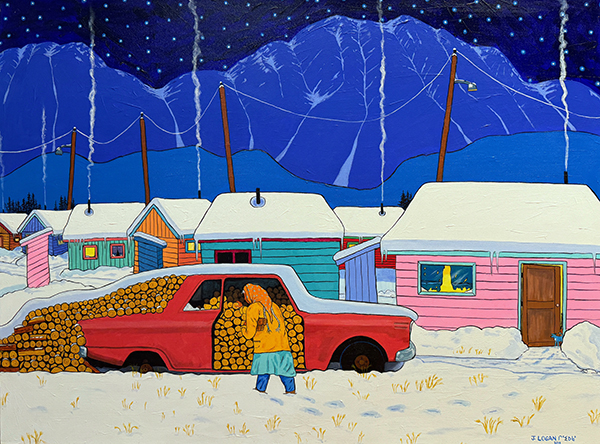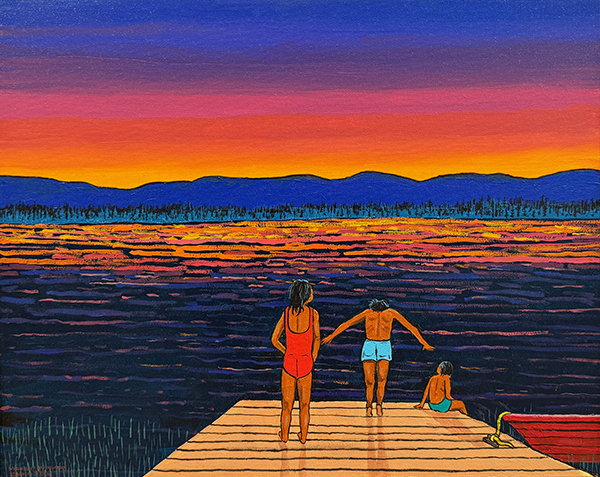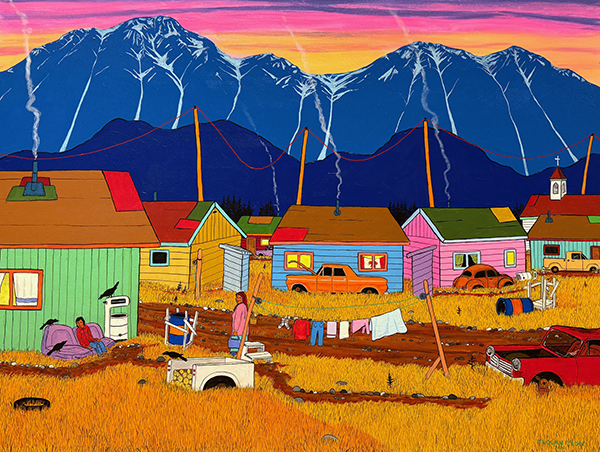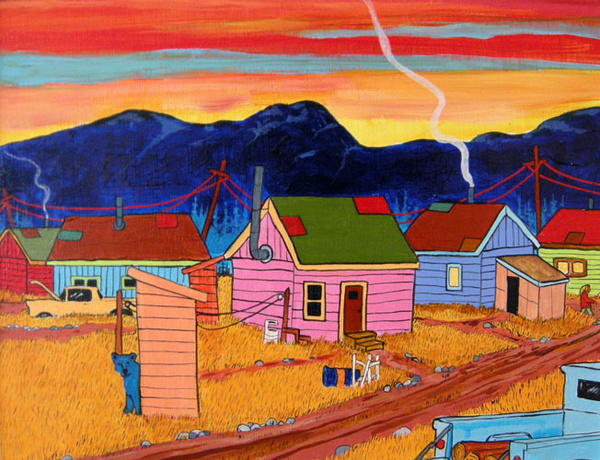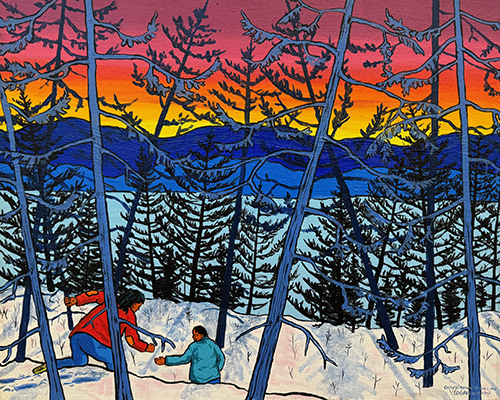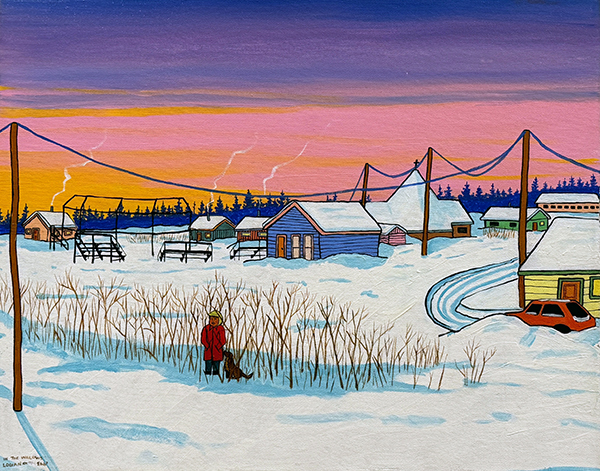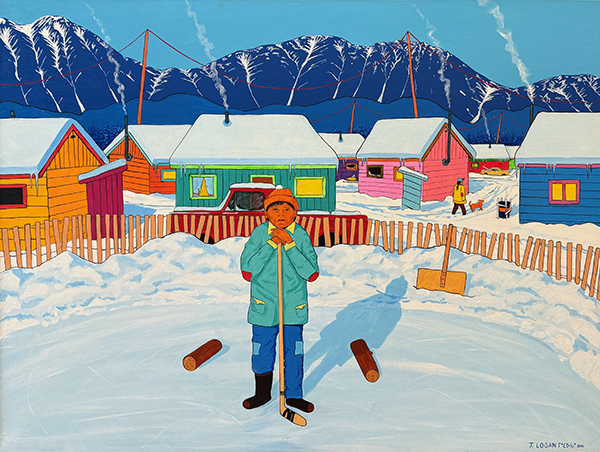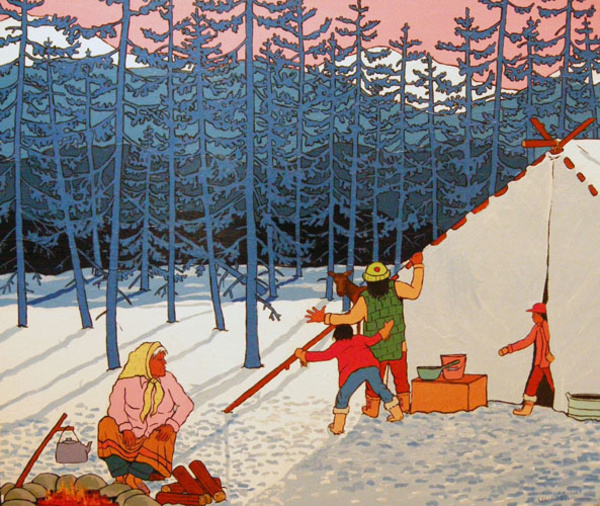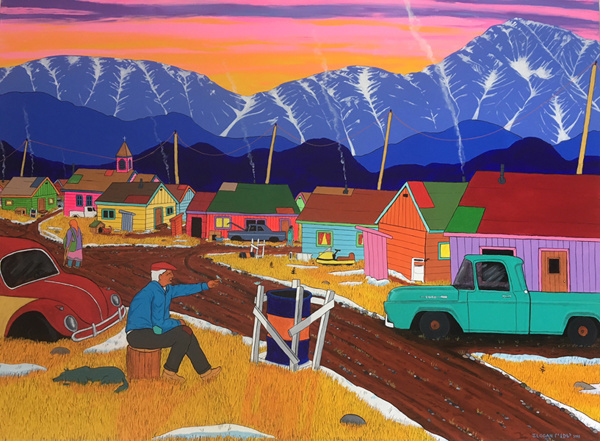Jim Logan
Jim Logan - Biography
Born in Port Coquitlam British Columbia in 1955, Jim Logan was raised in a Métis household and was inspired and taught initially by his mother who was herself an amateur landscape and wildlife painter. Logan’s paintings, while affectionate and sometimes humorous, also urgently speak to the need for restoration of identity and self-awareness within Canadian Indigenous communities. As a young artist, Logan studied at the Kootenay School of Art in Nelson, BC before working as a graphic designer for Yukon Indian News. Not long after arriving in Whitehorse, Logan, then a member of the Pentecostal Assemblies of Canada, began work as a lay missionary in what was then often referred to as the Village (Kwanlin Dün Furst Nation). He remembers being stunned by the conditions at Kwanlin Dün, which lacked the indoor plumbing and running water, that could be found just across the road in the Industrial Park in Whitehorse. It was here that he encountered the social realities of poverty, despair and dislocation inflicted upon many northern Indigenous communities and sought to capture and evoke these scenes in a striking, deliberately colourful and enticing faux-naïve style.
Logan sees himself as a social commentator, painting his life as he lived it and as he saw it – evoking worlds that exist in opposition to mainstream society. In 1988-89, Jim became the Co-Founder and President of the Society of Yukon Artists of Native Ancestry (SYANA) and most notably, he became the founding member and chief of the Eastern Aboriginal Artist Collective in 1999. From 1999 to 2002, Jim was the Aboriginal Art Curator for the Art Gallery of Nova Scotia, In 2002 he became the first Indigenous Visual Arts Program Officer at the Canada Council for the Arts in Ottawa. Since 2018, Logan has devoted himself entirely to his practice, and received an Honorary Doctorate from OCAD University and is a recent recipient of the King Charles Coronation Medal. A retrospective of his work will be presented by SAW Gallery in Ottawa in 2026.
Selected Exhibitions
2018- Surviving Occupation, Cambridge Idea Exchange, Iga Janik, Curator
2016 – Waiting – Bearclaw Gallery, Edmonton, Alberta
2012 – Wish You Were Here, Bearclaw Gallery, Edmonton, Alberta
2010 Our World, Bearclaw Gallery, Edmonton Alberta
2005 – This Is Our Place, Bearclaw Gallery, Edmonton Alberta
2004 - 24 Songs, Bearclaw Gallery, Edmonton , Alberta.
1998 love affair: the book of joan, Dalhousie Gallery, Dalhousie University, Halifax NS (Traveling exhibition including Moose Jaw Art Museum, Moose Jaw, Sask.
Yukon Arts Centre, Whitehorse, Yukon Territory in 1997)
Moments Between Heaven and Earth, Gallery Phillip, Toronto, Ontario
Re-Representing, McMichael Collection of Canadian Art, Kleinburg, Ontario 1995
Images in Collage, K'san National Exhibition Center, K'san BC
Recent Works of Jim Logan, Yukon Gallery, Whitehorse, Yukon Territory 1994
Classical Aboriginal Series, Yukon Arts Center, Whitehorse, Yukon Territory
Thunder Bay Art Gallery, Thunder Bay, Ontario
Kamloops Art Gallery, Kamloops, BC 1991/92
A Requiem for Our Children; 2017 Penticton Art Gallery, 1990 Rosemont Gallery, Regina Sask.
1992 - INDIGENA, Museum of Civilization, Hull, Quebec, toured, Winnipeg Art Gallery, Winnipeg,Man. Dalhousie Gallery, Dalhousie University, Halifax, Nova Scotia, The Windsor Art Gallery, Windsor, Ontario, The Heard Museum, Phoenix Az. USA, The Glenbow Museum, Calgary, AB
The Weight, 1987, Territorial Gallery, Whitehorse, Yukon Territory
Yukon Pavilion Featured Artist, EXPO 86, Vancouver BC,1986
Artist Specialization: A social realist painter, Jim Logan uses his art to depict what he calls the “quiet condition." A candid observer of Indigenous life in the north, it was his time spent in the Yukon that inspired Logan. The quiet condition he found there was a broad spectrum of life, love and hardship and the tenderness and love in his paintings, in contrast to the despair he often encountered, has shown Jim to be an accurate and painfully honest commentator of Indigenous life. Logan primarily uses oil paint as he finds the texture and the blending/mixing of colour to be less abrasive than acrylics. The extended drying time also allows one to work with colour depth and texture much longer than with acrylics.
